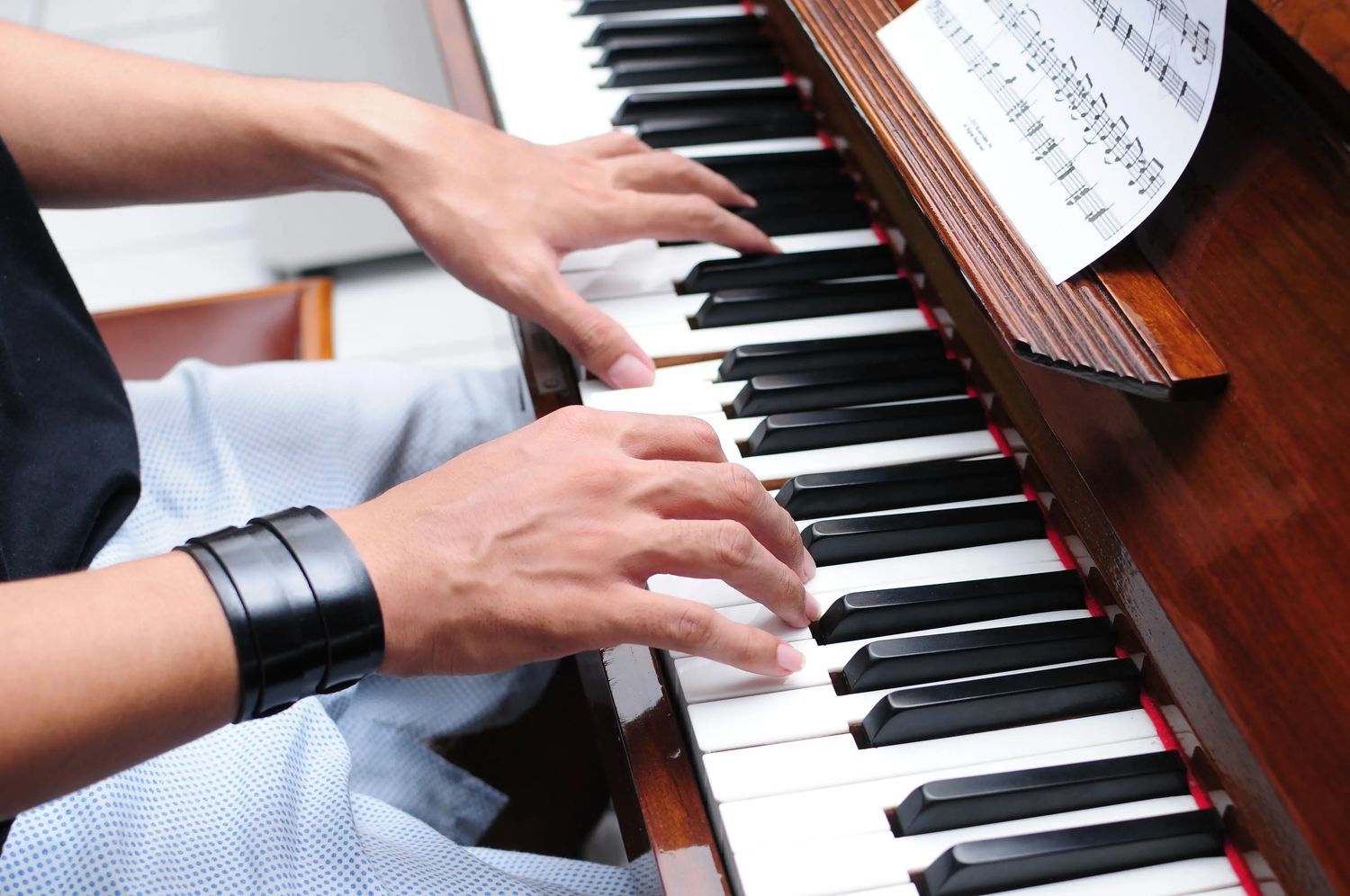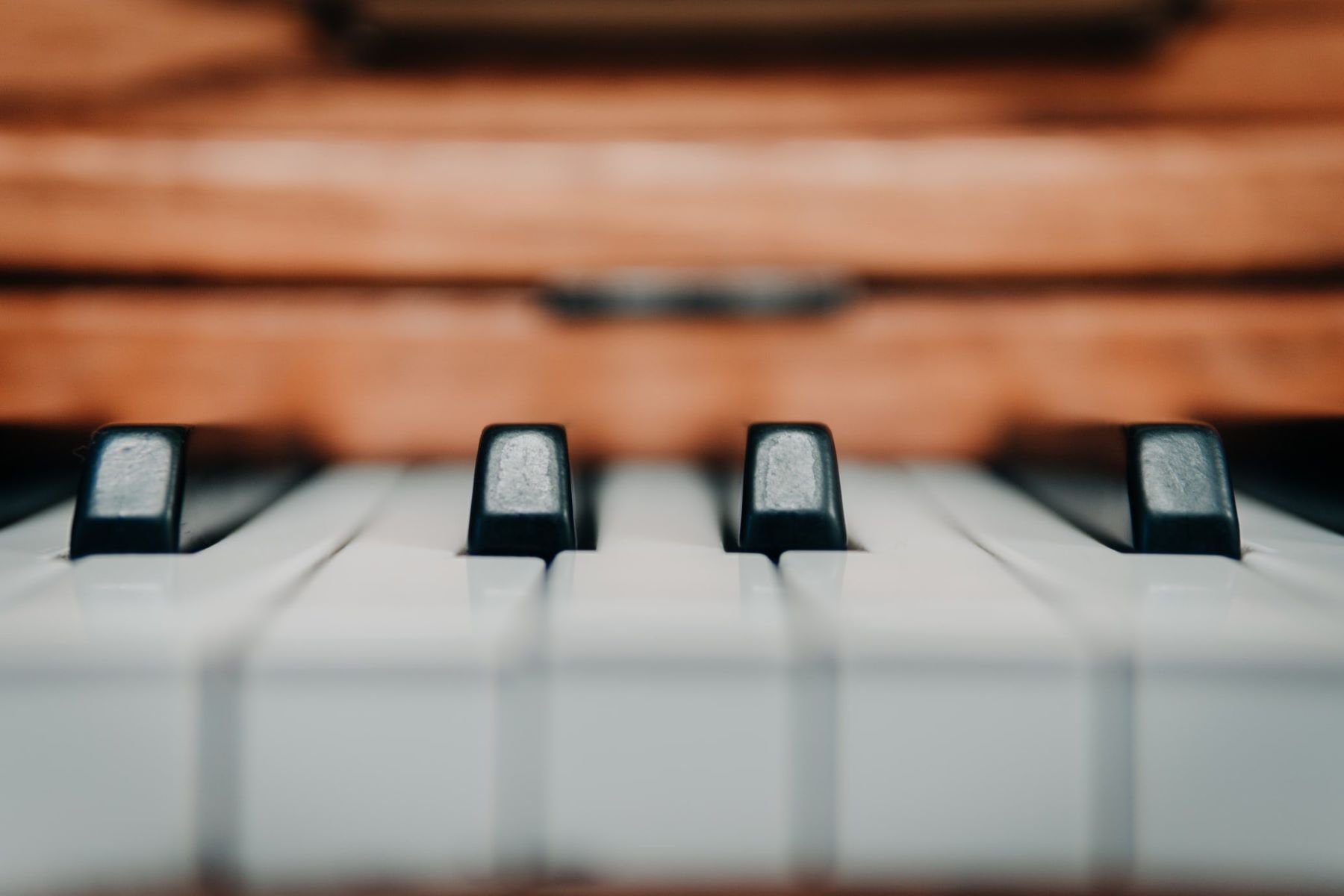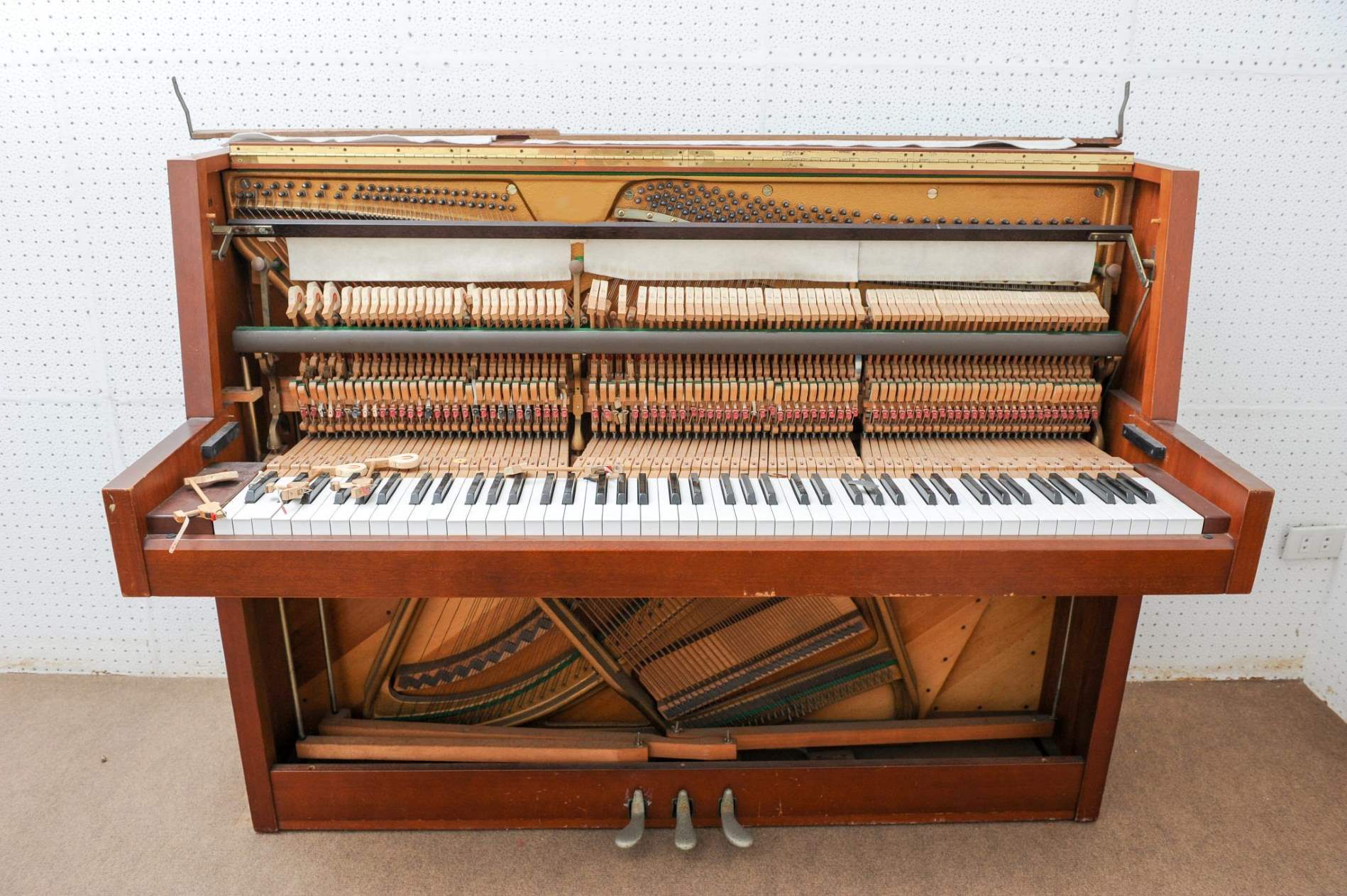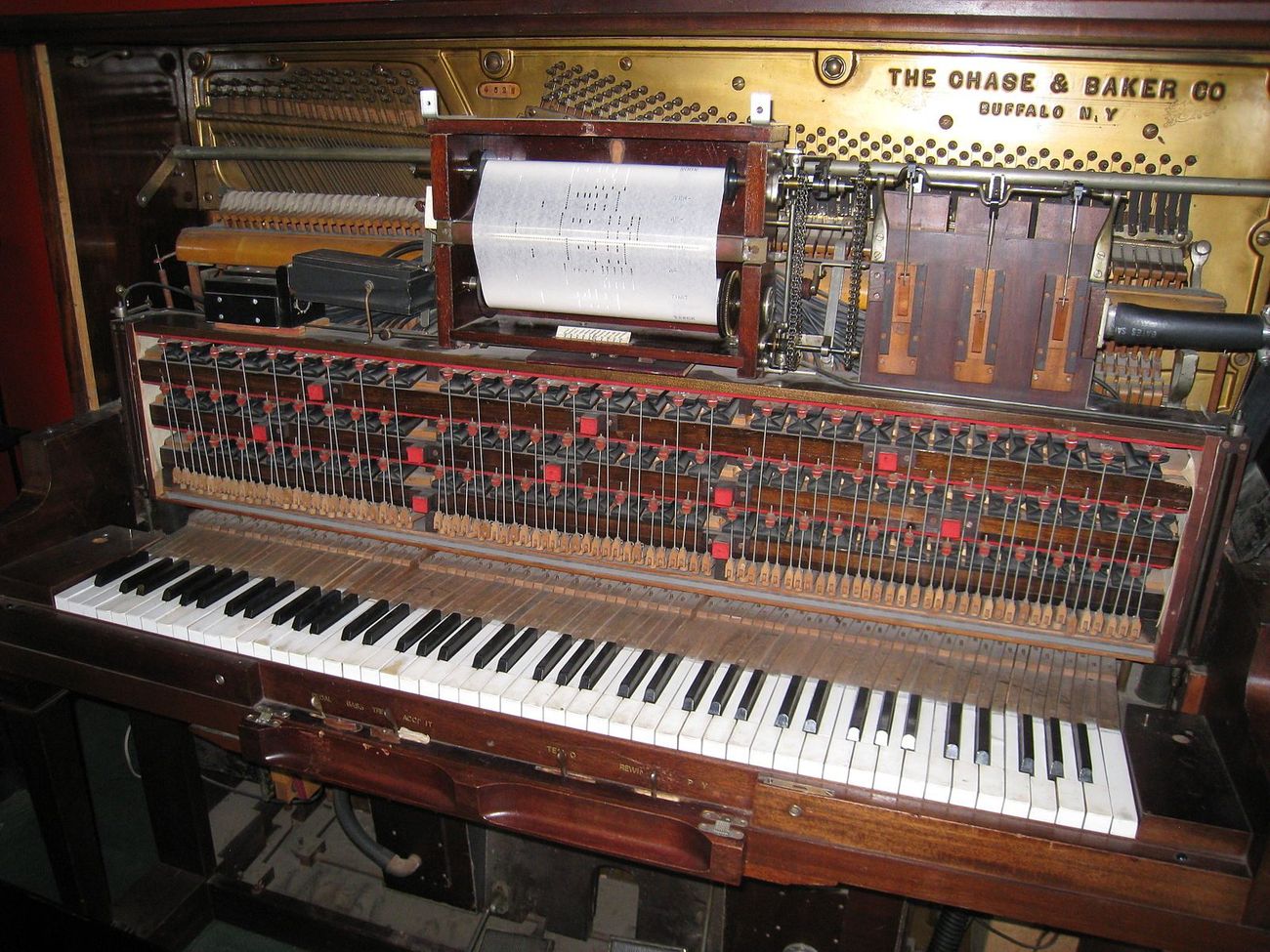Home>Instruments>Piano>How Does A Piano Make Sound


Piano
How Does A Piano Make Sound
Published: February 11, 2024
Discover how a piano creates beautiful music through the vibration of strings and the amplification of sound, explained in simple terms. Explore the fascinating process behind the magic of piano music.
(Many of the links in this article redirect to a specific reviewed product. Your purchase of these products through affiliate links helps to generate commission for AudioLover.com, at no extra cost. Learn more)
Table of Contents
Introduction
When you listen to the enchanting melody of a piano, have you ever wondered about the magic behind its captivating sound? The piano, with its rich and expressive tones, has the remarkable ability to evoke a myriad of emotions. From the gentle whisper of a soft lullaby to the powerful resonance of a grand symphony, the piano’s versatility is truly awe-inspiring.
Understanding how a piano produces such a diverse range of sounds involves delving into the intricate mechanics of this timeless instrument. From the arrangement of its internal components to the meticulous craftsmanship behind its construction, every element plays a pivotal role in shaping the piano’s unique voice.
In this exploration, we will unravel the mysteries of the piano’s inner workings, shedding light on the fascinating interplay of strings, hammers, and soundboard. By peering into the heart of the instrument, we can gain a deeper appreciation for the artistry and ingenuity that culminate in the symphonic poetry that emanates from its keys.
Structure of a Piano
At first glance, the piano’s elegant exterior may seem like a simple facade, but beneath its polished veneer lies a complex and meticulously crafted internal structure. The traditional acoustic piano comprises 88 keys, each connected to a series of intricate components that collaborate harmoniously to produce its iconic sound.
The keyboard serves as the interface between the pianist and the instrument, translating the player’s intentions into musical expression. Depressing a key sets off a chain reaction within the piano’s mechanism, initiating the production of sound.
Beneath the keys, a network of levers and hammers awaits, poised to transform the pianist’s touch into melodic resonance. As the pianist strikes a key, a corresponding hammer is propelled upward, striking the strings with precision and force.
The frame of the piano, often crafted from sturdy hardwood, provides the necessary support for the instrument’s internal components. This robust framework ensures stability and resilience, allowing the piano to withstand the tension exerted by its strings and the mechanical forces generated during play.
As we delve deeper into the anatomy of the piano, we encounter the soundboard, a crucial element responsible for amplifying the vibrations of the strings, thus enriching the instrument’s tonal character. The soundboard’s resonant properties contribute to the piano’s ability to fill a concert hall with its lush, reverberant sound.
Moreover, the pedals, typically found at the base of the piano, offer the pianist a means to manipulate the instrument’s sound, adding further nuance and depth to their performance. By engaging these pedals, the pianist can sustain notes, alter the timbre, or achieve dynamic variations, enhancing the expressiveness of their musical interpretation.
The Role of Strings
Central to the piano’s mechanism are the taut, resilient strings that lie parallel to the keyboard, extending the full length of the instrument. The strings, typically fashioned from high-carbon steel, are meticulously calibrated to emit precise frequencies, dictating the pitch of each note.
When a pianist depresses a key, a corresponding hammer is propelled upward, striking the strings with calculated force. This impact sets the strings into motion, inducing them to vibrate and produce sound waves. The length, thickness, and tension of each string determine its specific pitch, enabling the piano to generate a wide spectrum of musical tones.
Notably, the lower bass notes feature thicker and longer strings, while the higher treble notes are characterized by thinner and shorter strings. This deliberate variation in string dimensions contributes to the piano’s ability to produce a diverse range of frequencies, lending depth and complexity to its sonic palette.
Furthermore, the strings’ resilience and elasticity play a crucial role in sustaining the piano’s resonant sound. Their capacity to oscillate harmonically, even after the initial strike, allows the piano to sustain notes and produce sustained melodies, enriching the instrument’s expressive capabilities.
As the strings reverberate, their vibrations are transmitted to the soundboard, a vital component that amplifies and enriches the acoustic output of the piano. The harmonious interplay between the strings and the soundboard is instrumental in shaping the piano’s distinctive timbre and projecting its resonant voice throughout the performance space.
Ultimately, the strings form the foundational element of the piano’s sonic architecture, serving as the conduits through which the pianist’s creative intentions are transmuted into the captivating melodies that define this beloved instrument.
The Role of Hammers
Integral to the piano’s mechanism, the hammers are meticulously engineered components that facilitate the transformation of mechanical energy into musical sound. Positioned directly above the strings, the hammers are poised to execute the pianist’s commands with precision and finesse.
When a pianist depresses a key, a complex sequence of events is set into motion. The key’s action propels a corresponding hammer towards the strings, instigating a controlled collision that initiates the generation of sound. Crafted from resilient materials such as felt, the hammers are designed to impart forceful yet nuanced impacts on the strings, eliciting a diverse array of tonal nuances.
Notably, the density and resilience of the hammer’s felt covering play a pivotal role in shaping the piano’s timbre. Through meticulous calibration and voicing, piano technicians meticulously regulate the hammers to achieve the desired tonal characteristics, ensuring that each note resonates with clarity, warmth, and expressive depth.
Moreover, the hammers’ capacity to rebound swiftly after striking the strings enables the piano to facilitate rapid repetition of notes, a crucial feature for executing intricate musical passages with fluidity and precision. This responsiveness empowers pianists to articulate rapid sequences of notes with agility and dexterity, underscoring the piano’s versatility as a vehicle for virtuosic performance.
The hammers’ role extends beyond mere mechanical functionality; they are conduits through which the pianist’s emotive nuances and artistic intentions are conveyed. By modulating the velocity and pressure with which they depress the keys, pianists can elicit an extensive range of tonal shades, from delicate pianissimos to thunderous fortissimos, imbuing their performances with profound emotional resonance.
In essence, the hammers epitomize the marriage of precision engineering and artistic expression within the piano, embodying the instrument’s capacity to translate the pianist’s creative impulses into a symphony of captivating sound.
The Role of Soundboard
Within the intricate anatomy of a piano, the soundboard stands as a pivotal element that profoundly influences the instrument’s acoustic character and tonal resonance. Crafted from select spruce wood renowned for its exceptional vibrational properties, the soundboard functions as a transformative medium that amplifies and enriches the vibrations emanating from the strings.
When the strings are set into motion by the hammers, they impart their oscillations to the soundboard, which, in turn, serves as a conduit for transmitting these vibrations into the surrounding air. This process engenders the rich, sonorous timbre that defines the piano’s distinctive voice, endowing it with warmth, depth, and reverberant clarity.
Notably, the soundboard’s expansive surface area allows it to effectively disseminate the strings’ vibrations, ensuring that the piano’s acoustic output permeates the performance space with immersive resonance. This capacity to project sound with clarity and presence enables the piano to command attention and fill concert halls with its lush, enveloping tones.
Furthermore, the soundboard’s structural integrity and meticulous craftsmanship are instrumental in sustaining the piano’s tonal longevity and dynamic responsiveness. By withstanding the immense tension exerted by the strings and the relentless force of the hammers, the soundboard preserves the instrument’s tonal integrity, ensuring that each note resonates with unwavering clarity and expressive depth.
Moreover, the soundboard’s inherent flexibility and responsiveness imbue the piano with a dynamic range of tonal colors, allowing it to articulate a diverse spectrum of emotions with remarkable fidelity. Whether evoking tender melancholy or exuberant exultation, the soundboard serves as a conduit for the pianist’s expressive intentions, faithfully translating their artistic nuances into captivating sonic narratives.
In essence, the soundboard stands as a testament to the symbiotic relationship between artistry and engineering within the piano, embodying the instrument’s capacity to transform the pianist’s creative vision into an immersive tapestry of resonant beauty.
Mechanism of Sound Production
The enchanting symphony of a piano comes to life through a meticulously orchestrated interplay of its internal components, culminating in the production of resonant sound waves that captivate the senses. At the heart of this mechanism lies the transformative journey of mechanical energy into melodic expression, a process that unfolds with astounding precision and artistry.
When a pianist depresses a key, a sequence of events is set into motion. The key’s action triggers the release of a mechanism that propels a corresponding hammer towards the strings. Upon impact, the strings are set into harmonic motion, emitting vibrations that traverse the length of the instrument.
Simultaneously, the soundboard, a pivotal component crafted from select spruce wood renowned for its resonant properties, acts as a conduit for amplifying and disseminating the strings’ vibrations. As the soundboard reverberates with the strings’ oscillations, it catalyzes the projection of rich, enveloping sound waves into the performance space, enveloping listeners in a tapestry of lush, reverberant tones.
Furthermore, the piano’s robust frame, typically constructed from sturdy hardwood, provides the necessary support and stability for the instrument’s internal components. This resilient framework ensures that the tension exerted by the strings and the force generated by the hammers are effectively contained, allowing the piano to withstand the rigors of performance with unwavering composure.
Moreover, the hammers, meticulously crafted from resilient materials such as felt, serve as the conduits through which the pianist’s emotive nuances and artistic intentions are translated into expressive sound. By modulating the pressure and velocity with which they depress the keys, pianists can evoke a diverse spectrum of tonal shades, from delicate whispers to thunderous crescendos, infusing their performances with profound emotional resonance.
Ultimately, the mechanism of sound production within the piano epitomizes the seamless fusion of artistry and engineering, where precision craftsmanship converges with emotive expression to yield an instrument of unparalleled sonic beauty. Through this intricate interplay of components, the piano transcends its role as a mere instrument, emerging as a vessel for the realization of musical dreams and the embodiment of timeless artistic expression.
Conclusion
The piano, with its illustrious heritage and enduring allure, stands as a testament to the harmonious convergence of artistry, engineering, and musical expression. From the resounding echoes of its lowest bass notes to the crystalline clarity of its highest treble tones, the piano’s evocative voice has enraptured countless hearts and minds across the ages.
As we peer into the inner workings of this timeless instrument, we uncover a world of intricate mechanisms and meticulously crafted components that collaborate harmoniously to produce its transcendent sound. From the resilient strings that pulsate with vibrant energy to the hammers that imbue each note with expressive depth, every element within the piano’s anatomy contributes to its rich and diverse tonal palette.
The soundboard, a paragon of resonant craftsmanship, amplifies the strings’ vibrations, bestowing the piano with its lush, enveloping timbre and commanding presence. Meanwhile, the robust frame and meticulous calibration of the hammers exemplify the instrument’s capacity to withstand the rigors of performance while articulating a kaleidoscope of tonal nuances.
Furthermore, the piano’s mechanism of sound production embodies the seamless fusion of precision engineering and emotive expression, where each note becomes a conduit for the pianist’s artistic vision to unfold in resplendent sonic tapestries. From the gentle murmur of a nocturne to the thunderous fervor of a concerto, the piano transcends its physical form, emerging as a vessel for the realization of musical dreams and the embodiment of timeless artistic expression.
Through its enduring legacy and profound impact on musical culture, the piano continues to inspire and captivate, serving as a cherished companion for both seasoned virtuosos and aspiring musicians alike. Its timeless resonance echoes through the annals of musical history, a testament to the enduring power of human creativity and ingenuity.
In the symphony of life, the piano’s melodic voice endures as a timeless ode to the boundless depths of human emotion and the transformative power of music. Its legacy, woven into the fabric of our cultural tapestry, resonates with the promise of endless discovery and the eternal pursuit of artistic expression.











